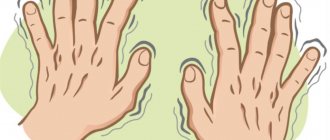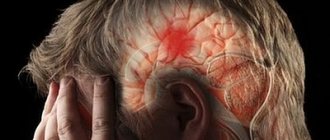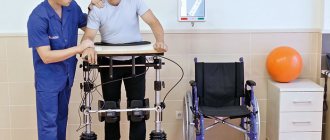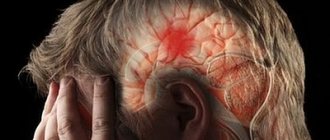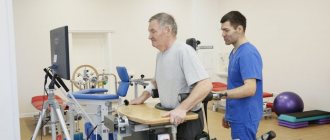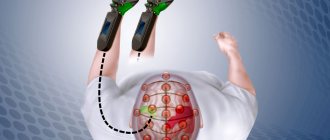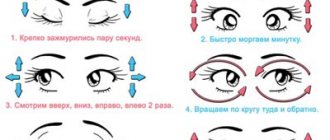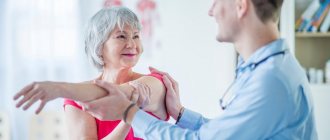Stroke is a serious brain disease characterized by circulatory disorders, focal lesions of brain tissue, and death of neurons. A stroke can be hemorrhagic or ischemic. Hemorrhagic stroke is less common than ischemic stroke and is characterized by rupture of blood vessels and hemorrhage in brain tissue. Ischemic stroke is more often diagnosed in older people and is characterized by impaired blood flow in the cerebral arteries and the death of neurons in the area of blood supply to brain tissue by the affected artery. When a stroke develops, the patient requires emergency care: the sooner the patient is admitted to the hospital, the more effective the care provided by doctors will be.
In addition to drug treatment of stroke, great importance is attached to rehabilitation therapy, which begins to be carried out in the acute period of the disease. At the Yusupov Hospital, various methods of physiotherapy and exercise therapy are used to restore patients after a heart attack and stroke. With the help of a comprehensive rehabilitation program, the patient is rehabilitated - restoration of motor activity, coordination of movements, visual function, sensitivity. The neurorehabilitation department of the hospital is equipped with modern devices, verticalizers and various simulators, including robotic ones.
The influence of exercise therapy on the patient’s nervous system
Therapeutic exercise is the performance of certain physical exercises, which begin with the simplest movements of the patient after he regains consciousness, then the physical activity gradually increases, the exercises become more complex. Exercise therapy helps improve blood circulation in organs and tissues, accelerates the process of restoration of various body functions, and improves metabolism. Physical therapy exercises for each patient are selected individually depending on the severity of the patient’s condition and concomitant diseases. An individual physical therapy program at the Yusupov Hospital is drawn up by a rehabilitation doctor.
Make an appointment
Passive and active rehabilitation after stroke
The first classes with the patient are conducted by a physical therapy instructor in the ward. The patient performs simple movements with his arms and legs with the help of an instructor - this type of rehabilitation is called passive. Passive rehabilitation of the upper and lower extremities begins with the development of large joints with a gradual transition to small joints. Rehabilitation therapy begins with the shoulder and hip joints. After developing the hip joint, the instructor helps the patient flex and extend the lower limb, develops the knee, then the ankle joint, and lastly the doctor develops the joints of the foot.
The rehabilitation specialist performs massage from the foot to the thigh. During hand rehabilitation, exercises begin with the development of the shoulder joint, then flexion-extension and rotational movements of the hands are carried out in the area of the elbow and hand joints. Massage of the upper limbs is performed from the fingers to the shoulder. A set of exercises combined with massage stimulates brain function. With partial restoration of motor function, exercise therapy exercises become more complex, and the patient begins to perform the exercises independently. The time for gymnastics increases from 10 minutes to half an hour, and active rehabilitation of the patient begins.
If the brain damage is significant, the patient is paralyzed, sensitivity is lost, rehabilitation is carried out with the help of medication, massage, electromagnetic stimulation of nerve cells, acupuncture, and reflexology. After partial restoration of motor function, the rehabilitation doctor introduces therapeutic exercises into the program.
The given exercises are aimed at restoring fine motor skills of the hands. Restoring hand mobility is one of the most difficult parts of rehabilitation, so it is important to be persistent and try all the exercises until you find what works for you.
Stretching exercises
Stretching exercises are performed actively or passively, depending on the degree of loss of hand mobility. If the mobility of a limb is completely lost, you can perform exercises by helping yourself with your healthy arm. Exercise helps prevent muscle spasms and restore hand mobility.
Hand exercise
Place your hand on the table, allowing your palm to hang freely from its surface. Start moving your palm up and down while bending your wrist.
Thumb exercise
The starting position is a fully open palm. Move your thumb toward your little finger as if you were showing the number 4. Continue moving your thumb between these two positions.
6 easy arm exercises
If your hand mobility is partially preserved, practice the exercises below. To complete this you will need a few simple items.
- Stacking coins
- Squeezing clothespins
- Board games (chess and checkers)
- Putting together a puzzle
- Playing the piano
- Playing a virtual piano (electronic simulator)
2 exercises for rotating and moving objects
Having mastered a set of coordination exercises, proceed to rotation and shift exercises.
Take a pen and try to rotate it around your middle finger using your index and ring fingers. Be sure to think about how the handle rotates in your hand.
Then hold the pen the way you normally hold it when writing (thumb, index and middle fingers). Push it forward with pushes until only the tip remains in your hand. Turn the handle over and repeat the exercise from the beginning. As you practice, think about how your fingers move along the handle.
Hand Exercises: Increasing Difficulty
To complete this exercise you will need 10 identical small objects like pea seeds. The goal of the exercise is to collect all the grains from the table with your fingers. As you select each next one, try to hold the already collected peas in your hand.
Thus, with your index finger and thumb you practice a pinch grip, and with the rest you learn to hold objects.
When all the beans are in your hand, place them back on the table one by one. Use your thumb to move the grain from your palm into the grip between your thumb and forefinger, and then place the grain on the table.
This exercise requires good coordination. If you can't do it the first time, remember that it is a difficult task that requires serious practice.
8 therapeutic ball exercises
The ball is one of the simplest and most accessible tools for restoring hand mobility.
Use soft balls to train strength and hard balls to restore coordination. Try using balls of different sizes and hardnesses to make your workout more effective.
- Power grip. Squeeze the ball with all your fingers. Try to squeeze with your pads and fingertips.
- Pinch grip. Squeeze the ball between your thumb and fingers. Squeeze it rhythmically on both sides.
- Thumb training. Roll the ball up and down in your palm, bending and extending your thumb.
- Rolling the ball on the table. Roll the ball over the surface, rolling it with your entire palm - from your wrist to your fingertips.
- Palm squeezing. Hold the ball in your palm and squeeze it with your fingers. This exercise differs from the power grip in that you must focus specifically on squeezing your fingers inward. Imagine that you are trying to press your fingers straight into your palm.
- Thumb rotation. Using your thumb in a circular motion, rotate the ball in your palm.
- Squeezing with fingers. Squeeze the ball with any two fingers of one hand. Alternate your fingers.
- Rolling the ball. Roll the ball from side to side using your thumb.
8 exercises with therapeutic clay
Therapeutic plasticine is another tool for restoring hand coordination and motor skills.
- Exercise "scissors". Squeeze a lump of plasticine between your fingers.
- Pinch grip. Squeeze a lump of plasticine with your thumb, index and middle fingers.
- Power grip. Press all your fingers into the lump of plasticine.
- Flat clamp. Squeeze the lump of plasticine with outstretched fingers.
- Two finger stretch. Wrap a strip of plasticine around two fingers and stretch it in different directions.
- Finger development. Wrap a strip of plasticine around your bent finger. And then straighten your finger, overcoming the resistance of the ring.
- Stretch with all fingers. Wrap a strip of plasticine around your fingers and then stretch it with all your fingers at the same time.
- Full power grip. Crumple a lump of plasticine by pressing it into your palm with your fingers.
Rehabilitation exercises on simulators
The Yusupov Hospital uses two types of simulators for the rehabilitation of patients after a stroke - mechanical and robotic. Mechanical exercise machines include exercise bikes, treadmills, and exercise machines for restoring balance and gait. Robotic simulators are equipped with electronic biosensors that stimulate activity by influencing the affected limbs. Robotic simulators have wide functionality; they are programmed taking into account the patient’s needs, promote the transmission of nerve impulses from the brain to the injured limb, and stimulate motor activity.
Rehabilitation exercises after a stroke are performed using multifunctional exercise equipment and sports equipment. There are different types of simulators:
- To restore motor activity, use a flexion/extension simulator, a simulator for developing the joints of the limbs, exercise tracks, and exercise bikes.
- For bedridden patients, exercise equipment in the form of a bed or bicycle is used.
- To restore balance, gait, and motor activity, a horizontal simulator is used.
- For patients who cannot yet stand, a seated exercise machine has been created to develop and strengthen the back muscles.
Rehabilitation at the Yusupov Hospital
At the rehabilitation clinic of the Yusupov Hospital, the patient will be provided with all the necessary assistance. The hospital's psychologists work not only with patients - they also provide assistance to the patient's family members. The rehabilitation process of restoring motor activity of the limbs requires patience from the patient and a lot of work - this will allow you to return to a full life after a stroke. You can make an appointment with a neurologist by phone. The rehabilitation doctor will develop individual exercises for the patient, the patient will be under constant medical supervision and receive qualified assistance from specialists.
Hand exercises for stroke rehabilitation
Hand exercises improve motor activity and help restore lost functions. In severe cases and in the absence of early rehabilitation, hand functions are often not restored or partially restored. In some cases, rehabilitation does not help; doctors carry out bipolar stimulation - an effect on immobile joints and muscles of the body using artificially created impulses from the brain to the body. This helps restore reflexes and sensitivity, improve blood circulation in the tissues. Then the patient undergoes rehabilitation using exercise therapy and other methods.
The motor activity of the hands and the motor skills of the fingers are most difficult to restore. You can often see trembling hands in a patient after a stroke; he cannot hold a ballpoint pen in his hand, cannot write, and does not grasp objects well. Especially for such patients, they conduct classes in modeling from plasticine, with a Rubik's cube, teach them to write again, and work on a silicone simulator. Doctors use reflexology if a patient has suffered a severe stroke. This helps restore fine motor skills, improve grasping movements, flexion and extension of fingers, and joints of the hand. At the Yusupov Hospital, patients undergo rehabilitation on computerized simulators using a comprehensive recovery program, which includes massage and physical therapy exercises.
Hand exercises are not complicated and do not require special exercise equipment or devices; the patient can perform them at home:
- Lie on the bed, move your arms back and grab the headboard. Tighten the muscles of your arms and body, imitating a pull-up. Raise your legs up or stretch them straight.
- Using rotational movements of bent arms, knead the shoulder joint.
- Sit upright on the bed, place your hands behind your back as close to each other as possible, tilt your head back, then return to your previous position.
Possibilities for restoring movements of a spastic hand after a stroke in the late period
Usually, in the first year after a stroke, the rehabilitation potential is maximized, subject to systematic training. Since we are talking about a spastic hand, at the macromotor level one can observe changes in the form of: adductor-abductor, flexion-extension movements, etc. Micromotor skills, as a rule, lag significantly behind, with the exception of clenching your fingers into a fist. As for voluntary unclenching, it may be completely absent. This does not mean that it does not exist at all. Sometimes the patient describes the straightening of the fingers as a spontaneous process, especially during morning awakening or yawning. This is where the “unclamping” ends. The question rightly arises: “Is it possible to perform a movement voluntarily if it exists involuntarily?”
So, why is there no finger extension? Without this important movement, the hand becomes non-functional. The whole reason is spasticity, when the fingers seem to freeze and the desired movement does not occur. “Pull out” (as patients often put it) the decompression is not an easy task, but it can be solved. The problem of spasticity can be effectively overcome only with an individual approach, and accordingly, it is incredibly energy-consuming for both the specialist and the patient. In addition, the result is not only unstable at first, but also distant in time. More often than not, after a year of rehabilitation, patients are exhausted, see no further improvement, and either stop exercising or spend less time exercising. They can also be understood, because why waste effort if nothing happens next. Hence the lack of mood, apathy, depression and so on in a circle.
If, after a year of rehabilitation measures, the hand does not hang like a “lash”, or the hand is not in severe spasticity, when significant effort is required to straighten the fingers, then not everything is bad and conscious unclenching is possible.
Here is an example of such a violation (before classes).
Achieving movement in the finger extensors requires a lot of hard work. This is a period of restorative learning, when movements appear not with the help of passive methods, such as current stimulation, massage, robotic therapy, but work with a conscious effort, the desire to feel, “catch” and consolidate the movement. This is a joint process between both the specialist restoring motor skills and the patient himself. From sitting in a chair in front of the TV, moving the healthy arm back and forth with the sore arm, or short five-minute exercises, the result is zero. Without proper motivation, nothing will work! It's better not to take it in the first place.
For a visible, sustainable (!) result, such as movement of the extensor fingers of a spastic hand, 3-5 months of hard work are required.
An example of movement restoration (after a complex of rehabilitation training).
The individual method I developed for restoring movements in a spastic hand has been tested many times on patients not only in the early period after a stroke or injury, but also in the late period. The video excerpts used as examples are the result of intensive work over 3-4 months. If the patient himself is motivated to systematically work with his hand, I suggest a free consultation. You can sign up by contacting the Stimul mobile rehabilitation service.
Ergotherapist Tsygankov Roman Valerievich
For the shoulder joint
Restoration of the forearm and shoulder joint takes place with the help of flexion and extension exercises, rotation, push-ups, muscle tension and relaxation, clapping, and massage. To do this, use exercise machines, dumbbells, and various devices. First, the arm is kneaded, then a set of exercises is performed; therapeutic exercises are always combined with a massage of the limbs. A set of exercises for the shoulder joint:
- The patient lies on his back, arms extended along the body. The instructor holds his hand at the elbow to avoid bending, takes the patient's palm with his other hand and moves the patient's arm up and down.
- The instructor performs circular movements with the patient's arm fixed in a straightened state.
- The patient lies on his back, with his arm slightly to the side. The instructor turns the straightened arm over, palm down, then up.
Passive movements and massage
Simultaneously with positional treatment, they begin to engage in passive gymnastics (movements in the joints of paretic limbs, which are carried out by a physical therapy methodologist or a person replacing him). Passive movements are carried out without active muscular assistance from the patient. They are performed carefully, at a slow pace.
Passive movements are carried out as fully as possible, isolated in each joint. To do this, the person working with the patient clasps the paretic limb above the joint being worked on with one hand, and with the other below this joint. And the development is carried out in the following sequence: shoulder, elbow, wrist joints and fingers, hip, knee, ankle joints and toes. The volume and tempo of movements gradually increase, their number for each joint can be from 5 to 10. Passive movements in the first days after a stroke are recommended to be carried out 2-3 times a day for all joints of the limbs.
When performing movements, the initial position of individual parts of the limbs is of great importance.
For example, during passive movements in the shoulder joint, the patient is placed on his healthy side, and the affected arm is bent at the elbow. With one hand they fix the shoulder joint of the sore arm, with the other they clasp the arm bent at the elbow joint and make circular movements, pressing towards the shoulder joint, as if screwing the head of the humerus into the glenoid cavity. Abduction of the hip is more complete when the leg is bent (at the hip and knee joints), since this reduces muscle tension in the adductor muscles of the thigh, and the resistance of these muscles decreases.
On these same days, you should begin to do a light massage of both healthy and paretic limbs. If you can use a variety of massage techniques when massaging healthy limbs, then when massaging paretic limbs you need to be very careful. The fact is that excessive massage can lead to a sharp increase in the tone of certain muscle groups, which is undesirable. Therefore, when massaging paralyzed limbs, it is recommended to use the following rules.
Massage on the arm should begin from the shoulder, and on the leg - from the buttocks and thigh (the patient's position is lying on his back or on his healthy side). Then they move on to massage other parts of the limbs.
When massaging muscles in which the tone is usually increased (pectoralis major muscle, biceps brachii, flexors of the hand and fingers, quadriceps femoris, triceps surae), only light stroking should be used. In this case, the pace of massage movements should be slow. When massaging their antagonists, in which the tone is usually also increased (extensors of the forearm, hand and fingers, posterior femoral group, tibialis anterior and peroneus longus muscles), you can still use other massage techniques: rubbing and shallow kneading. These muscles can be massaged comparatively more energetically and at a faster pace.
For lower limbs
Exercises for the lower extremities begin to be performed as soon as the patient regains consciousness. At the initial stage, the instructor helps to bend and straighten the lower limbs; over time, the patient will be able to imitate walking in a prone position, then get out of bed, learn to maintain balance, and walk without support. Exercises for patients in the supine position:
- The patient is in a supine position, the leg is straightened. The instructor turns the leg with the foot inward, then outward.
- The patient is in a supine position, the leg is bent at the knee. Holding one hand under the knee, the instructor performs circular movements with the limb, holding and pressing with the other hand in the hip joint area.
- The patient is in a supine position, the affected leg is bent at the knee. The instructor fixes the leg at a right angle, holding it with the other hand under the knee, bends and straightens the lower limb.
- The patient is in the same position on his back, with the leg fixed at a right angle. The instructor, holding the patient's leg under the knee, moves it away from the body and returns it back.
These exercises are performed by the patient after he is allowed to sit:
- In a half-sitting position, holding the edges of the bed with both hands, stretch both legs forward as evenly as possible, bend over, throwing your head back. While stretching your limbs, take a deep breath, return to your previous position and exhale.
- Remain in the same body position, keep your breathing calm and deep, slowly lift your right leg up and lower it back, then your left leg.
- In a half-sitting position, bend your leg, pull your bent leg at the knee as close to your chest as possible (you can help with your hands), and tilt your head forward during the exercise. Bending the leg, inhale, straightening the limb, exhale, return to the previous position.
Physical therapy for strokes part 2 - 8 simple exercises to restore health
Exercise therapy for strokes
Stroke is an acute disorder of cerebral circulation of various locations. The first mention of stroke was made by Hippocrates in the 460s. years BC e., which speaks of a case of loss of consciousness as a result of brain disease. Galen later described symptoms that begin with a sudden loss of consciousness, and designated them with the term “stroke.”
How serious is the problem of stroke?
Rudolf Virchow made a significant contribution to the understanding of the pathogenesis of stroke. He proposed the terms “thrombosis” and “embolism”, which are still used today. And he also established that arterial thrombosis is caused by fatty degeneration of the vascular wall, and associated it with atherosclerosis.
According to the World Health Organization (WHO), the mortality rate from strokes is 10–15%, which is the 3rd place after cardiovascular diseases and cancer. Approximately 60% of people who have suffered an acute cerebrovascular accident (ACVA) remain completely disabled. About 20–25% return to work.
In the first months, the chances of restoring lost functions after a stroke are highest. Speech recovery occurs very slowly. Or maybe you won’t recover at all. Many who have suffered a stroke have problems with speech, understanding, and decision making. Patients' behavior changes, which often causes difficulties in communication.
Long-term complications after a stroke, such as depression or pneumonia, occur in the first days or months after the blood circulation in the brain is disrupted.
A stroke leaves dead nerve cells in the brain. The degree of dysfunction depends on where they are located. The dead cells are surrounded by temporarily inactivated ones, which is why they seem to be inhibited. There are cells in the brain that can take over the functions of the dead. You can start the process and teach them to work with the help of exercises. There are methods of recovery after a stroke through exercise therapy.
In most cases, the development of a stroke leads to serious consequences. The main ones are:
- Speech disorders;
- Loss of vision and hearing;
- Memory problems;
- Mental disorders;
- Tremor;
- Facial asymmetry;
- Paralysis;
- Sudden death.
The consequences of a stroke depend on the amount of damage. Symptoms in severe cases include loss of consciousness, impaired cardiac function, breathing, and motor dysfunction (flaccid paralysis and muscle paresis). Affected may be one limb (monoplegia - monoparesis), two on one side hemiplegia - miparesis), three (triplegia - triparesis), four (tetraplegia - tetraparesis) and two upper or two lower limbs (paraplegia - paraparesis).
What types of stroke are there?
There are two types of stroke: hemorrhagic (1-4%) and ischemic (96-99%).
Ischemic stroke occurs due to blockage (thrombosis) of cerebral vessels by an atherosclerotic plaque or thrombus. In the area of the brain that is supplied by the thrombosed vessel, persistent ischemia develops. As a result, nerve cells die. The brain tissue softens, collapses, decay products are absorbed, causing cysts to appear.
The cause of hemorrhagic stroke is bleeding in the brain as a consequence of hypertension, atherosclerosis of cerebral vessels. The walls of the blood vessel rupture and blood enters the brain, destroying it.
When oxygen starvation lasts more than 4 minutes, brain cells are damaged and die. The part of the body controlled by nerve cells loses function.
Cerebral circulation disorders as a result of hemorrhagic or ischemic stroke cause paresis or central (pastic) paralysis on the side opposite to the lesion (hemiplegia, hemiparesis), sensory disturbances, and reflexes. Often, patients after a stroke experience friendly movements in paralyzed limbs - synkinesis. They arise due to increased excitability of the segmental apparatus of the spinal cord and the involvement of motor neurons of the paralyzed side in motor actions. Occur when a person performs movements with a healthy limb.
Physical therapy for strokes
Objectives of exercise therapy for strokes:
- restore movement function;
- counteract the formation of contractures;
- reduce increased muscle tone and reduce the severity of friendly movements;
- help strengthen the body.
The doctor prescribes exercise therapy from the 2-5th day from the onset of the disease, when the signs of a coma have disappeared. When choosing a therapeutic exercise technique, the patient’s clinical data and the time elapsed since the stroke are taken into account. There are 3 periods after a stroke.
- Early recovery period - up to 3. months;
- Late recovery period - up to a year;
- The period of residual motor dysfunction.
In each period, a complex of physical therapy appropriate to the stage of recovery is used.
Early recovery period
Lasts up to 2-3 months. This is the acute period of a stroke. Initially, complete flaccid paralysis develops, which after 1–2 weeks. gradually gives way to spasticity and contractures begin to form in the arm flexors and leg extensors.
Objectives of exercise therapy during this period: The initial course of physical therapy for stroke includes passive movements of the affected limbs, as well as massage. Necessary for the prevention of pathological conditions (increased muscle tone and contractures, pain in the joints of the extremities, trophic disorders of bedsores).
First, do exercises for a healthy part of the body. General strengthening exercises are alternated with special ones. The complex is performed slowly, the movements are smooth. You need to exercise regularly, gradually increasing the load. A positive attitude is important, then physical therapy classes will be effective.
A few days after the stroke, positional therapy is used. Necessary to prevent the development of spastic contractures or eliminate or reduce existing ones. If the patient has complaints, the position is changed immediately. Treatment is carried out every 1.5-2 hours a day. At this stage, classes are held lying on your back.
Exercise therapy is used to prevent joint stiffness. Flaccid paralysis, 2 weeks after the stroke, changes to spastic paralysis. As a result of increased tone, irreversible changes occur in the joints on the affected side. This leads to limited movement.
Performed after treatment of a position when muscle tone weakens. Classes begin with active exercises for a healthy limb, which the patient performs himself. They include all types of movements in a specific joint: flexion and extension, abduction and adduction, rotation. Then they move to the sore side, the movements in the joints of which are performed by a physical therapy instructor. Passive exercises against stroke begin with the knuckles, gradually moving up.
And the complex also includes breathing exercises to restore proper breathing. Start with 2–3 days of treatment. They consist of a controlled change in the pace and depth of inhalation and exhalation, following the commands of the exercise therapy instructor. This includes rhythmic breathing under counting, exercises to reduce the frequency of respiratory movements, changing the type of breathing from chest to abdominal and vice versa.
It is important to prevent bedsores and pay special attention to the functioning of the intestines and bladder.
Late recovery period
The objectives are:
- improvement of the functional state of the central nervous system, cardiovascular system and respiratory system;
- increasing the general emotional tone of patients;
- prevention and treatment of contractures;
- restoration of temporarily lost motor functions, development of self-care and walking skills.
The patient is in hospital. The doctor prescribes a course of therapeutic exercises. The exercises are performed in a supine position, on the healthy side.
In exercise therapy for strokes they use:
- passive exercises for paretic limbs;
- exercises with the help of an instructor in lightweight IP;
- holding individual parts of the limb in
- a certain position;
- active exercises for paretic and healthy limbs;
- relaxation exercises;
- breathing exercises, changing position during bed rest.
A patient in a hospital room is being prepared to get up while still in bed. This is an active and passive imitation of walking, a gradual transition to a vertical position.
If you have an ischemic stroke, you can sit after 7–14 days. For hemorrhagic – after 4–5 weeks. At first, the landing angle is 30-40, gradually increasing to 90°. Later, a sitting position with legs down is allowed for no more than 15 minutes. Next, the patient gets up and walks around the ward on crutches with the help of a methodologist. Then they are taught to walk up the stairs.
As part of exercise therapy for strokes, the following is added to facilitated movements:
- exercises with a gymnastic stick using a healthy hand;
- for the body - turns, slight bends forward, backward, to the sides;
- provide training in household skills (dressing, undressing, eating).
The period of residual motor dysfunction. Objectives: combating muscle spasticity, joint pain, contractures.
A distinctive feature of exercise therapy in this period is the inclusion of exercises to overcome resistance. To obtain and consolidate the result, it is important to perform the complex correctly. Massage also helps to form normal muscle tone and speed up the recovery of motor functions. To obtain a lasting result, you need 10-20 sessions per year.
A set of such measures helps:
- reduce muscle spasticity, joint pain, contractures;
- improve motor functions, self-care abilities, and labor.
Exercise therapy for strokes can be combined with balneophysiotherapy, drug treatment, and massage. The patient needs to continuously perform exercise therapy prescribed by the doctor at home.
In addition to the complex of physical therapy for strokes, it is also important to change your lifestyle - quit smoking, preferably eliminate alcohol. Eat less fatty, sweet, and overly salty foods. Include physical activity daily. For elderly patients, do “mental exercises.” This includes solving crossword puzzles, memorizing poetry, writing memoirs, weaving, knitting.
Source – “Neurological Clinic of Doctor Yatsenko”
Exercise therapy to restore visual function after stroke
At the Yusupov Hospital, patients with visual impairments will be able to undergo examination, treatment, rehabilitation, and, if necessary, surgical treatment in a network of partner clinics. Rehabilitation after a stroke includes exercises that you can then do at home. Depending on the type of visual impairment, rehabilitation therapy is carried out:
- If lateral vision is impaired, intensive medical and restorative treatment is carried out, undamaged areas of the cerebral cortex take over the lost function, and vision is restored. In this case, the doctor marks with a red line a passage of text on the page of the book on the side of which lateral vision is weakened. Before starting to read, the patient must look for the red line - this will be the beginning of the text.
- With oculomotor nerve palsy, the patient cannot look straight and his eyes look in different directions. Such a disorder can resolve over time with proper and timely treatment and rehabilitation. With paresis of the oculomotor nerve, accommodation may be impaired. Over time, the patient gets used to using only central vision. To determine the impairment of perception of objects at far and near distances, the following test is performed: the doctor takes a pencil in each hand and brings one of the pencils closer to the patient’s face, then moves his hand back.
- If atrophy of the oculomotor nerve develops, the patient's function of the upper eyelid muscle is impaired. Nystagmus or trembling of the eyeballs may occur. Often this condition leads to visual impairment.
To restore vision, the doctor asks the patient to draw the other half of an object in a drawing or take part in a certain type of computer game. The patient is asked to follow with his gaze the pencil in the doctor’s hand, which moves in front of the patient’s face to the right, then to the left, up or down. The patient should follow the pencil without turning his head. To improve blood circulation, eye massage is necessary and beneficial. The eyes are closed, with gentle movements in a circle the patient massages the eyeballs, lightly pressing on them. The exercise should be performed for 10-20 seconds.
To restore visual function, a number of eye exercises are performed:
- Rotate the eye to the right, then to the left - repeat several times.
- Look up, then down - repeat the movement several times.
- Movement of the eyes in a circle - to the right, then to the left.
- Take a short break with your eyes closed, open your eyes and blink frequently for a few seconds.
- Close your eyes tightly and relax - repeat several times.
- Fix your eye on the object, then turn your head to the right and left without taking your eyes off the object - do this several times.
Restoring fine motor skills after stroke
Fine motor skills are restored with the help of simple exercises that allow you to restore fine hand movements and finger flexibility. The most effective activities for restoring fine motor skills are putting together puzzles, various objects from small parts of a construction set, drawing, fastening buttons on clothes, and lacing shoes. To restore the function of the hand and fingers, the patient is asked to take two nuts in his hand and roll them with the movement of the palm and fingers. Recommended for patients after a stroke to develop fine motor skills:
- Sort through the beans and peas, separating the peas from the beans.
- Use special silicone hand trainers with spikes to massage your palms and fingers.
- Tighten and unscrew nuts, close and open the lock with a key, turn on and off the lights in the room, write texts.
Active gymnastics
Passive movements and massage are preparatory measures before active gymnastics, which plays an important role in developing isolated movements in paretic limbs.
Active gymnastics begins with exercises for healthy limbs, alternating them with gymnastics for paretic ones, as well as breathing exercises. The load on the cardiovascular and respiratory systems should increase gradually, otherwise the patient may become overfatigued. It is recommended to monitor the pulse after each exercise performed 1-5 times. Exercises should be separated by rest breaks lasting 1-2 minutes.
Active gymnastics begins with exercises in isometric mode. Isometric muscle contraction is a contraction without shortening, that is, without movement in the joints. When performing exercises in this mode, it is often necessary to provide assistance to the patient.
To achieve isometric contraction of the extensors of the hand and fingers, the patient is placed on his back, the arm is bent at the elbow and the forearm is placed in a vertical position. Then you should extend (straighten) the hand and fingers (so that they are 180 degrees with the forearm). Holding the paretic arm by the forearm, the patient is asked to keep the hand and fingers in this extended position. In the same starting position, but holding the paretic arm by the hand, the patient is asked to hold the forearm in a given vertical position.
This exercise is aimed at training the forearm flexors in an isometric manner. To train the forearm extensors, the patient’s paretic arm is extended at the elbow and raised vertically upward. When fixing the patient's shoulder, they are asked to hold the arm in a raised position. To do this, he must tense the extensors of the forearm.
Isometric contraction of the abductor muscles of the shoulder is carried out with the patient positioned on the healthy side. The paretic arm is raised up and bent at the elbow at an angle of 90 degrees. While supporting the forearm, ask the patient to hold his hand in this position.
The hip flexors are trained isometrically with the patient in the supine position. The paretic leg is bent at the knee, lightly holding it by the shin. And the patient is asked to hold the leg in this position, not allowing it to straighten at the knee. In the same starting position, you can train the hip abductors. Slightly moving the leg bent at the knee to the side, ask the patient to hold it in a fixed position.
These exercises make up the initial complex of active gymnastics. In the first days of classes, they should be performed 2-3 times, gradually increasing the number of exercises to 5-10 times.
When patients begin to develop independent isolated movements, they begin to train them. For this purpose, light exercises are used, the purpose of which is to eliminate the unwanted influence of gravity. “It is best to carry them out using various suspensions, hammocks and blocks.
Lightweight exercises should not cause pain. They are performed at a slow pace, in a volume accessible to the patient. First of all, exercises are carried out for muscles whose tone usually does not increase. So, for example, supporting a paretic arm with a hammock, the patient is asked to perform those active movements that he has already developed.
This includes abduction and adduction of the shoulder, flexion and extension of the forearm, and extension of the hand. Facilitated abduction and adduction of the hip is trained with the patient in the supine position. And by turning the patient onto the healthy side and supporting the affected leg, they train the extension and flexion of the lower leg.
As the range of active movements increases over time, you should add exercises with light, measured resistance. It works like this; for example, when actively extending the lower leg, you should try to slightly impede this movement by pressing on top of the lower leg and not allowing the leg to extend at the knee. Exercises with light resistance are carried out similarly for the remaining muscle groups.
It must be remembered that resistance exercises are included in the complex of active gymnastics only when active isolated movements appear in a sufficiently large volume.
These exercises are recommended mainly for muscles in which the tone does not increase. The person performing them needs to pay special attention to breathing. The patient should not delay him. Resistance exercises should be combined with passive relaxation exercises.
Restoring speech after a stroke
Speech function after a stroke is restored much worse than motor function. Its recovery can take a long time, over several years. Speech therapists at the Yusupov Hospital are developing a program and working with the patient to restore speech throughout the entire period of his stay in the hospital; after discharge from the hospital, his relatives are involved in the patient’s rehabilitation. To restore speech, the following techniques are used:
- Pronunciation of an incomplete word - the patient must complete the word independently.
- If speech function is completely lost, rehabilitation begins with the pronunciation of individual sounds.
- When the patient learns to pronounce words, he is forced to repeat short poems and sayings.
- Singing is considered one of the best methods of speech restoration.
- In order for the patient to learn to speak faster, the facial muscles and tongue muscles should be trained. For this purpose, the patient is taught to curl his lips into a tube, stick his tongue out of his mouth as far as possible, and lick his lips with his tongue, first in one direction, then in the other. Lightly bite your lower lip, then your upper lip, and bare your teeth.
Make an appointment
Rehabilitation of the patient at home
Before the patient is discharged from the hospital, relatives receive recommendations on caring for the patient after a stroke. Recommendations for rehabilitation will be provided by the attending physician. The rehabilitation exercise program is performed every day without breaks, 2-3 times a day. Performing physical exercises should not tire the patient or cause him pain. Exercises in a sitting position help prepare the patient for walking.
When the condition improves, exercises are performed in a standing position; they help eliminate neurological disorders as much as possible by restoring fine movements. The patient performs exercises with an expander. From a standing position, he bends down and picks up a matchbox from the floor. Performs breathing exercises with raising your arms up while inhaling, standing on your toes, then lowering yourself onto your entire foot, lowering your arms, exhaling, leaning forward. A comprehensive recovery program is aimed at reducing muscle tone, improving blood circulation, preventing joint contracture, restoring and maintaining fine motor skills, speech, preventing the formation of bedsores and the development of inflammatory processes.
The Yusupov Hospital uses modern rehabilitation methods, uses various types of exercise equipment, and physical therapy exercises. Rehabilitation doctors develop an individual rehabilitation program for each patient.
Treatment by positioning on the back and on the healthy side
The paretic limbs are positioned with the patient in a supine position so that the muscles in which tone usually increases after a stroke (shoulder adductors, arm flexors, hip adductors, leg extensors and dorsal flexors of the foot) are stretched. To do this, place a chair with a pillow at the patient’s bedside, on the side of the paralyzed limbs, on which the sore hand is placed, palm up.
The arm is straightened at the elbow and moved to the side at an angle of 90 degrees. A cotton swab covered with oilcloth is placed under the patient's armpit. The fingers are extended. The hand and forearm are bandaged to a splint, which can be cut out of some hard material (for example, plywood) and covered with gauze.
To fix the position of the hand, place a bag of sand or salt (weighing 0.5 kg) on it. The paralyzed leg is bent 15-20 degrees at the knee, under which a bolster is placed. The foot rests against a wooden box (“boot”) covered with soft material. It is recommended to put a small pillow in the boot to better support the foot.
The patient can remain in the supine position for 1.5 to 2 hours. Then it should be turned onto its healthy side.
When laying the patient on his healthy side, as opposed to laying him on his back, the paralyzed limbs are given a flexion position. The sore arm is bent at the shoulder and elbow joints and a pillow is placed under it, and the paralyzed leg is bent at the knee and hip joints and also placed on a pillow. Just as in the supine position, it is very important to ensure the correct position of the hand and foot. The fingers of the hand should be straightened, the hand should be tied to the splint and lie on the pillow, palm down. The foot should rest against the box. The patient can remain in a lying position on the healthy side for 30 to 50 minutes.
During the first days after the disease, they regularly alternate between placing the paretic limbs in the position of the patient on the back and the healthy side. Treatment by position is not performed during meals, sleep at night, or other therapeutic measures.
Styling paretic limbs prevents the development of muscle contractures, helps reduce muscle tone and prevents the development of pain in the joints (especially in the shoulder). In addition, changing the patient's position in bed every 1-2 hours prevents the development of bedsores.
